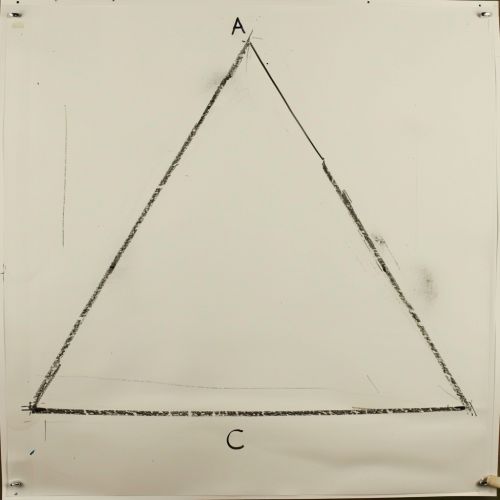Triangle
Definition
A triangle is a polygon with three edges and three vertices. It is one of the basic shapes in geometry. A triangle with vertices A, B, and C is denoted as △ABC.
Types of Triangles
Triangles can be classified according to the lengths of their sides:
- An equilateral triangle has all sides the same length. An equilateral triangle is also a regular polygon with all angles measuring 60°.
- An isosceles triangle has two sides of equal length. An isosceles triangle also has two angles of the same measure, namely the angles opposite to the equal sides.
- An scalene triangle has all its sides of different lengths. Equivalently, it has all its angles of different measure.
Triangles can also be classified according to their internal angles:
- A triangle with all interior angles measuring less than 90° is an acute triangle or acute-angled triangle.
- If one interior angle of a triangle is a right angle, the triangle is a right triangle.
- A triangle with one interior angle measuring more than 90° is an obtuse triangle or obtuse-angled triangle.


Properties
Triangles have several fundamental properties:
- The sum of the measures of the angles of a triangle is 180 degrees (a straight angle).
- The measure of an exterior angle of a triangle is equal to the sum of the measures of the two interior angles that are not adjacent to it; this is the exterior angle theorem.
- The area of a triangle is given by the formula A = 1/2bh, where b is the length of the base and h is the height or altitude of the triangle.
- The Pythagorean theorem states that in a right triangle, the square of the length of the hypotenuse is equal to the sum of the squares of the lengths of the other two sides.
Trigonometry
Trigonometry is a branch of mathematics that studies relationships involving lengths and angles of triangles. The field emerged in the Hellenistic world during the 3rd century BC from applications of geometry to astronomical studies. Trigonometry is the foundation of the practical art of surveying.
